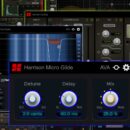Teaching can be a great way to supplement your income as a musician. You also get the added bonus of helping others get into music, as well. The only drawback to teaching is “the trap.”
“The Trap”
There’s a saying that floats around the music industry, “Those that can’t do—teach.” Unfortunately, there is a bit of truth to this.
“The trap” is when you get so comfortable teaching that you actually stop doing the thing that you teach.
My greatest successes as a teacher have come from imparting my experiences as a working professional to my students.
Finding a balance between actually doing the thing that you teach and teaching it, is imperative.
Skills Needed
As a teacher you need to have a developed knowledge of the techniques required to do the instrument or subject that you teach. And you should have a good theoretical understanding of them.
You should possess the ability to articulate ideas in a way that is easy for your students to understand. Think of the saying, “Show me as if I were a two-year-old.”
Most of all, patience is a necessity. Even though you understand the subject, not every student will comprehend the information in the same way. So, never lose your patience with a student.
Where to Find Potential Students
Finding students is all about getting them to know you exist.
Printing up a flyer offering lessons and posting at the various music stores, coffee shops, live music venues, community centers, and schools in town is a great way to target some potential students.
Another option is the internet. You could post an ad on Craigslist offering your teaching services. Join a Facebook group of local musicians and post an ad in the forums. Instagram, Twitter, LinkedIn, are all viable options that provide great visibility.
Try to show potential students why they should study with you, instead of someone else.
Teaching Private Students
The most common type of music lesson is the private lesson. The benefit of private students is that the student gets a more personalized lesson experience.
If you’re teaching out of your house, make sure you have everything necessary to conduct the lesson as smoothly as possible.
Make sure your house is clean. No one wants to come back for another lesson if your place is gross. If you own pets, it’s a good idea to keep them cordoned off while teaching.
The other option for teaching privately is going to the student’s house and setting the lesson up there. If this is the case, make sure you’re able to bring all the necessary equipment to provide an effective lesson.
If travelling to your students, take into account travel time and traffic. This should factor into the rate you charge, as well.
Teaching Private Lessons for a Music School or Music Store
The benefits of teaching at a private music school or local music store are that the students and teachers show up to one neutral location.
Being brought on board as a teacher at a private music school may require you to have, at the minimum, an Associate’s degree in the subject you teach, and to submit a résumé and be interviewed.
Teaching at a local music store can be a bit easier to get into. You may still have to provide a résumé, but the criteria won’t be as strict.
The upside of teaching at one of these types of places is that the students, most likely, will be brought to you.
The downside is that you won’t have much control over what you charge per lesson. Most schools and stores have a standard lesson rate that won’t be changed. They will also take a percentage of your lesson income as “rent” for use of the lesson space.
Teaching Online
Teaching online via Zoom or any video conferencing platform allows you to connect with students that may not live in your immediate area.
If it is your desire to teach online, you will absolutely need a website. Your website will allow you to connect with your students, accept payment, schedule lesson times, and provide any materials that may be required.
Teaching online also requires you to be a bit more technologically inclined than teaching in person. Whichever platform you decide to use, you will want to make sure there is a screen-share feature, as well as the ability to share your computer’s audio.
Because you’re teaching music in an online format, it is vital that the audio you are providing from your end is top-notch. Don’t rely on the microphone in your computer to capture what you’re doing. You will need to invest in some sort of audio interface and an external microphone to get the best possible sound.
The Pay for Private Lessons
The easiest way to charge students is by the hour. (See October issue of Music Connection, page 45.)
Because lessons typically occur once a week at a certain time, I charge the students by the month. This is to lock them into my schedule and encourage them to show up.
You should also adopt a strict cancellation policy. If a student can’t make their scheduled lesson time, they have to let me know at least twenty-four hours before they’re scheduled to show up. I won’t refund their money, but I will reschedule the lesson. If the student tries to cancel within the twenty-four-hour window, I won’t reschedule, and they will lose the money that they paid for the time. The only time I ever make an exception to this is when the student has some sort of emergency, and it can’t be avoided.
If you have to cancel a student last minute due to an emergency, offer to make up the lesson at another time or pro-rate it to the next month.
All in all, teaching can be both lucrative and rewarding for a musician—always try to find the balance between doing what you teach, and teaching what you do.
KRIS HAWKINS is an Emmy-winning music producer, award-winning educator, and author of The Working Musician’s Handbook for Professional Success (Rowman & Littlefield Publishers). For more information: krishawkinsmusic.com, [email protected]














